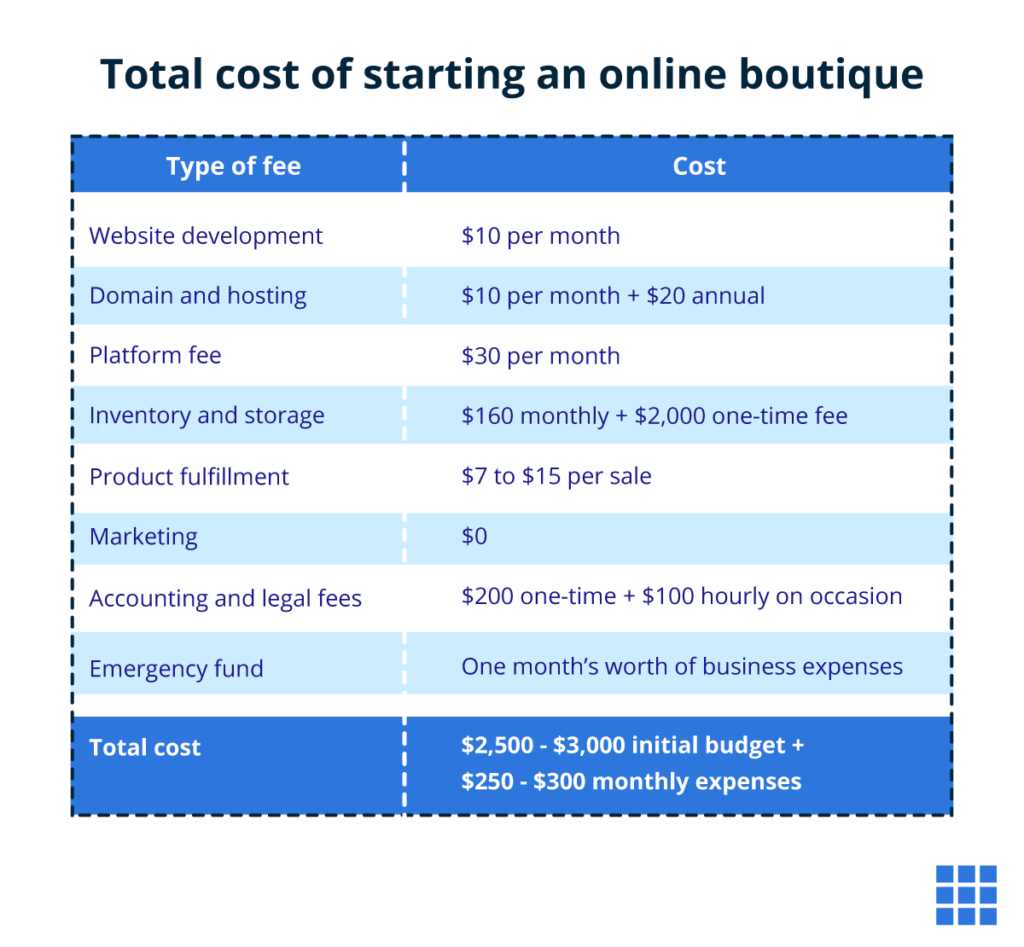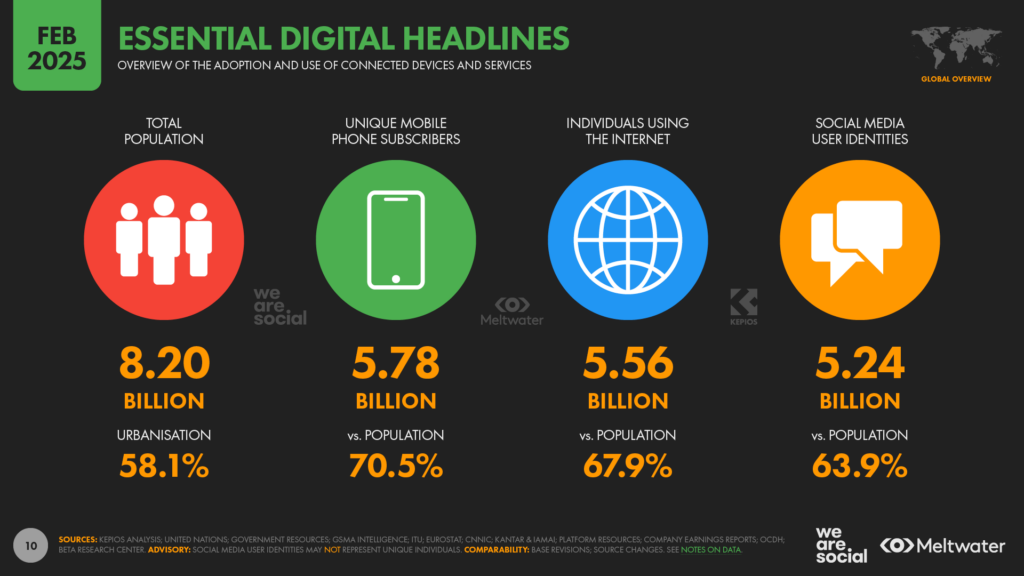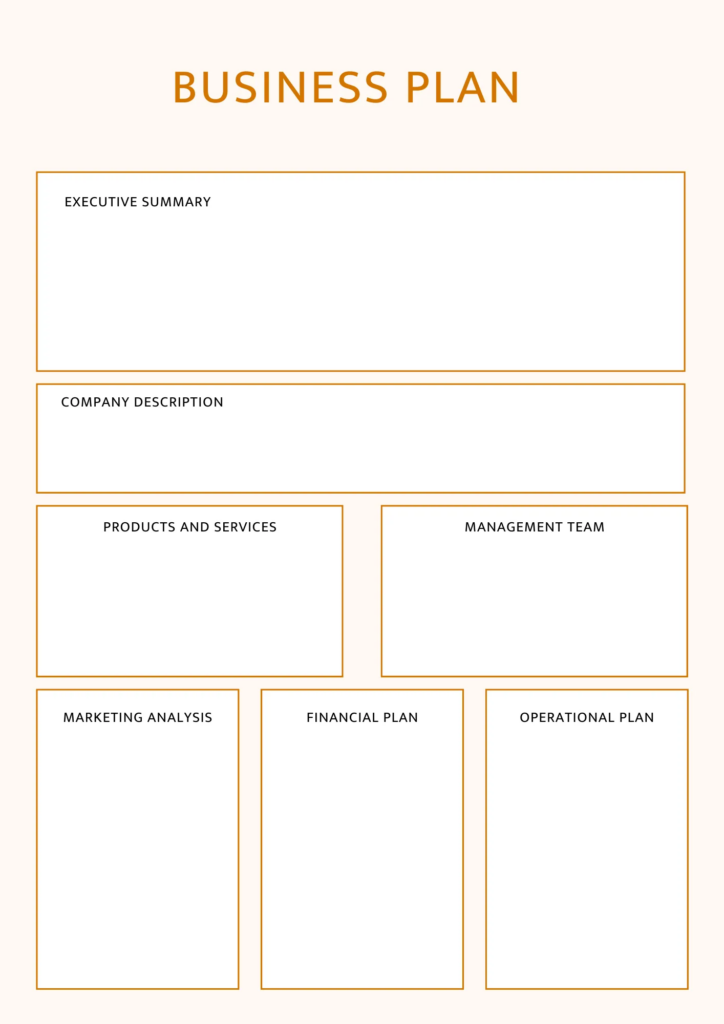The internet has changed our world in unimaginable ways. It reshaped the way we do business. Online businesses with no physical presence have become a norm. You can set up a business from your home and generate passive income easily.
Having an online business offers you a lot of benefits that conventional brick-and-mortar business doesn’t.
This article unleashes the steps you can follow to create an online business with minimal budget and effort.
Are you ready?
Let’s get started…
What is an Online Business?
An online business is any business that is operated either fully or partially through the internet. Ecommerce stores are an example of online businesses that work completely online. If an ecommerce store has a physical outlet or store, it’s still considered an online business because it sells online to its customers.
The primary revenue source of an online business should be through the internet.
This means a services business having a website will also be categorized as an internet business if the major portion of its revenue (and customers) is generated online (instead of offline).
Here are common online businesses:
- Ecommerce stores
- Blogs
- Affiliate marketing
- Social content creators (e.g., vloggers)
- Digital products
- SaaS.
Benefits of an Internet Business
What makes an online business so lucrative is its wide range of benefits. Here’s a list of the primary benefits of owning an internet-based company:
Low Cost
The best thing about an internet business is its low cost.
You can start your online business with minimal capital, run it from your home, and save tons of money.
Here’s a breakdown of how you can save on costs when starting and running an online business:
- No office or building needed: You can start an internet business (of pretty much any kind) from your home. You don’t need to rent out an office or move to a specific building. Starting it from your home or any place you already own or live in means you don’t have to pay any rent.
- No capital is needed. The initial investment needed for an online business is minimal. If you have a laptop and high-speed internet, you don’t need anything else. It’s pretty much free to get started.
- Minimal maintenance cost. The cost to run and manage an online business is quite low. You only pay for hosting (if you own and host a website) and for any other tools or apps (paid ones) that you use for your business.
Cost Breakdown
Low cost doesn’t mean there aren’t any costs associated with an online business. Costs you incur for your internet-based business include:
- Domain and hosting charges: Online businesses need a domain and hosting (most of them). If you are a social media content creator, you don’t have to spend money on domain and hosting.
- Equipment and online apps: Almost all types of businesses need either equipment or apps to run. For instance, if you want to create an ecommerce store, you need a finance app, logistics and order processing apps, payment processors, etc. These costs vary from niche to niche.
- Marketing cost: This is variable and depends on your business type. In all cases, you need to have a marketing budget because that’s how you’ll make money.
- Other costs: These include one-time and recurring costs such as legal fees, business setup costs, business registration (if you decide to register your business), etc.
Here’s an example of how much does it cost to start an online boutique:

Here’s how much does it cost to start a blog:

It’s a misconception that you can start an online business without any money. You need money to start an income-generating online venture.
But this cost is way too less than what you need for a physical or any other business.
Flexibility
This is where it gets interesting.
Online businesses offer flexibility in terms of timing, business processes, and management.
There are no fixed working hours. You can work from anywhere, anytime. Take your business with you anywhere you go.
You don’t get such perks with physical businesses.
The flexibility allows you to offer your services 24/7 to your customers.
For instance, if you have a blog enabled with Google AdSense, there aren’t any time restrictions. Your target audience can visit your blog anytime across the globe. You might be sleeping at your home and your blog will be generating income for you.
And you work on new content and marketing of your blog at your own pace and will.
These benefits make internet business an ideal solution for people who love flexibility.
Massive Reach
An online business, depending on your niche and business type, connects you with a global audience. You get access to all the internet users across the world.
Statistics show that 67.9% of the population has access to internet (which equates to 5.56 billion people):

This means if your business doesn’t have any specific target market, you can reach 5.56 billion people. For instance, if you have a blog or an affiliate site that’s open to everyone, you can benefit from global reach.
On the other side, if you have an ecommerce store and you offer delivery to a country, you can precisely reach all the internet users within that country precisely. This is a great benefit that you don’t get with a physical outlet where your store is accessible to people of a certain region surrounding your store (as visible in the map below):

Generally, an online business has a much wider reach than an offline business.
Scalability
Scaling an online business is easier than a traditional business.
This is because you don’t have any physical assets or infrastructure that need to be upgraded. Your online business uses virtual assets that can be scaled effortlessly.
For instance, if you want to enter a new target market for your SaaS company, you don’t need to upgrade your hosting plan or move your servers. All you need is to incorporate the same in your marketing strategy and that’s it.
Here’s a 7-step scaling process explained for a coaching business:

You can notice that it doesn’t require any kind of asset relocation and infrastructure updates. It can be easily done.
Scaling is essential for growth. It’s something you can’t ignore for long, and having an online business makes scaling and managing a hassle-free process.
Data
One of the most important elements of an online business is data.
Since your business operates virtually, you generate a lot of data daily. This data is used for decision-making, marketing, customer experience, product development, and other areas.
It gets extremely hard to collect data for an offline business.
Consider a local restaurant. It gets pretty hard for restaurants to collect data from all the customers (especially walk-in customers). You can keep a record of customers but you don’t get any personal information unless you ask them to fill out an online form during their stay – which isn’t what people like.
In the absence of data, you have to rely on assumptions and gut feeling for decision-making.
In the case of an online business, you get heaps of data with proper tracking. It helps you understand your customers, know their interests and challenges, and figure out what type of content they like to read.
This eventually helps you in decision-making for your business.
Types of Online Businesses
Here’s a list of the major online businesses you can choose from before moving to the next step. It’s important to choose the right business model based on your interests, budget, and goals.
- Ecommerce: It’s the most popular form of online business where you sell physical (or even digital) products online.
- Digital products: It covers the online selling of digital products such as ebooks, software, and courses.
- Online services: You can sell services through freelancing portals and via your website across numerous categories to businesses and individuals around the globe.
- Blogging: One of the easiest businesses to start. Create a blog, publish quality content, drive traffic, and monetize your blog to earn money.
- Content creator: A rapidly growing and popular online business is a social media content creator. You need to publish quality content on a social platform and convert it into your business by making money from sponsorships and ads.
All the other online business types fall within these 5 categories.
For instance, dropshipping is a business model for ecommerce businesses. Similarly, affiliate marketing is another way to earn money which can be used with blogging and content creation.
It’s important to understand the difference between an online business and a business model.
The 5 categories above represent online business types. Within each business type, you can choose from a wide range of business models (which is the way you run your business and generate revenue).
How to Start Your Online Business
Follow the step-by-step guide below to start your internet business from scratch:
1. Choose a Business Type
The first step is selecting a business type.
Choose a broad online business type from the following categories:
- Ecommerce
- Digital products
- Services
- Blogging
- Social content creation.
Ask yourself what you can do best and finalize a business type. I’m sure this is something you already know.
You also need to choose a niche market and business model.
Let’s discuss these two as they play a major role in the success of your online business.
Niche market
A niche market is a small market with highly specific needs. For instance, clothing is a broad category while men’s 100% cotton t-shirts is a niche within the clothing category. This niche has a small target market but highly specific needs.
The benefit of choosing a niche market is that it is easier to survive and grow (and compete) in a niche market than in a broad market.
The simplest way to choose a niche is by narrowing down as much as you can from a broad market. Your finalized niche should have a market need, target audience, and must meet your core goal:

Avoid creating a new market as it won’t have any buyers. You need people who are interested in buying your product or service.
Business model
The business model defines how you’ll make money from your online business.
One of the top reasons why new businesses fail is that they run out of cash (38%). This happens when you don’t know how your business will generate revenue:

If you don’t set a business model upfront, you’ll spend money from your pocket to run your business and it won’t last much longer. The revenue stream should be enabled from day one.
And it isn’t easy for most online businesses to generate revenue.
For instance, if you start a blog. You might not be able to earn anything from ads, affiliate sales, or sponsorships unless your blog reaches a certain level.
Choosing a business model at the planning stage helps you identify if your idea is worth pursuing or not. For instance, if you plan to start a blog in the finance niche. You can only make money from affiliate marketing and/or sponsorships. Ad networks don’t like the finance niche.

You need to do your homework and understand the ins and outs of your online business type, niche, and revenue model.
Finalize everything before moving to the next step.
2. Create a Business Plan
It is the core document that outlines your online business goals and the plan of action to achieve objectives. A business plan is a formal, written document that looks like this:

A business plan should have the following sections:
- Executive summary
- Business detail
- Market analysis
- Business structure and model
- Products and services (revenue model)
- Financial plan
- Operational plan (action plan)
- Marketing strategy
- Legal and regulatory details.
You can add more sections and details for clarity and make it as detailed as possible.
A business plan works as a guide to tell you what needs to be done, how it is to be done, and why something needs to be done.
This requires a lot of research and work. You can’t create it if you don’t have the necessary data and information.
Start with setting a long-term objective for your online business and convert it into a SMART goal that meets the following 5 characteristics:

Once you have a long-term objective, you can start creating your business plan. Use a free online business plan template like this and fill in the details.
Make sure the data is accurate. Don’t add fluff.
You might not have an idea of a lot of things such as a plan of action or a marketing plan. Keep it general at this stage and refine it later. But it’s best to figure everything out for smooth business operations.
3. Set Unique Selling Proposition
A unique value proposition (UVP) or unique selling proposition (USP) is a statement that describes the benefits of your product or service that makes it different from competitors. This statement is used for the customers and is shared across marketing channels to help them understand how your business stands out.
Here’s an example of a USP:

The USP should talk to the customers directly and communicate the value it offers (which makes it better than competitors). Essentially, a USP should address 3 elements:
- Target audience
- Core features that make your product stand out
- The product or service you offer.

It is essential to create a USP at this stage as it helps you decide if your business is really worth it and it has something unique to offer your audience.
Follow these tips and best practices to craft a unique value proposition for your core product and online business:
- Write multiple statements each addressing/highlighting a unique aspect or feature of your product
- Keep the USP statement short and interesting
- Use a power word
- Make sure it’s memorable by using rhyming words and phrases
- Use clear, actionable language
- Avoid jargon or technical words or statements
- Tell customers what they’ll get
- Focus on customers instead of talking about your product
- Highlight what makes you different from competitors
- Set clear expectations.
Your USP should have the following elements:
- A headline for grabbing attention
- A subheadline with a description
- Supporting image
- Call to action.
Here’s an example of a USP that stands out and explains clearly to the visitors what they’ll get and why they should use MailChimp:

It doesn’t have an image but it still works great.
Visit different websites to get ideas for USPs from their landing pages. Then create one for your business using a business plan and your research.
4. Create a Website
An online business is incomplete without a website.
All types of online businesses need a website. It acts as your business face and lets you connect with your target audience. Most online businesses can’t be performed without a website such as an ecommerce store, blog, and selling digital products.
If you create content for social media or use a marketplace like Gumroad to sell digital products, you can go without a website. But it is highly recommended to have your own website.
Research shows that a website has a direct influence on buying as 54% of people say that they decide to buy from a business based on the website. Also, a whopping 75% of people judge the credibility of a business based on its website:

Even if you don’t want to sell anything from your website (for now), create it. You’ll need it for marketing purposes (more on this below).
It doesn’t cost a lot to create a website:
- Buy a .COM domain that’ll cost you under $20 per year
- Buy a hosting plan that costs under $20 per month
- Use a free theme and template to develop your website.
Install WordPress on your website once it goes live, choose a free theme from the WordPress directory here, install basic free plugins, add content, and you are done.
If you are setting up an ecommerce store, you’ll need to choose an ecommerce platform like Shopify or Woocommerce. If you want to start a blog, WordPress.org is ideal as it is the best free CMS for blogging.
5. Develop Marketing Strategy
This is where you’ll need a website for all types of online businesses.
You need to market your online business to generate sales. You can’t just set up a business and sit back and expect people to find you. This doesn’t work on the internet.
You need to develop a marketing strategy based on your business plan to drive traffic, generate leads, and generate revenue.
And this is why you need a website.
There are two broad types of marketing strategies to choose from:
- Free marketing channels such as organic traffic, social media marketing, word of mouth, etc.
- Paid marketing that involves PPC and social media ads.
You should incorporate both marketing channels in your marketing strategy as it’s the best way to build a brand and grow your business as explained in this post.
Follow these steps to create a marketing strategy for your online business:
- Identify marketing goals using the SMART goal framework as discussed above
- Create buyer personas by understanding your target audience and ideal customers
- Set marketing budget
- Choose marketing channels and touchpoints such as content marketing, PPC, influencer marketing, etc.
- Create marketing assets, collateral, and content (based on selected marketing channels and marketing methods)
- Initiate marketing campaigns
- Track performance and tweak your strategy.
For instance, if you are interested in creating an e-commerce store, here’s how you should develop its marketing strategy based on the 7-steps above:
- Set goal of generating $5,000 in sales in first 60 days
- Use existing data or primary data to understand who your ideal customers are
- Assume you don’t have a marketing budget
- You will leverage free marketing approaches that should include content marketing, SEO, and organic social media marketing
- Create content for blog and social media accounts, acquire backlinks, reach out to other sites for guest posts, etc.
- Start publishing content
- Track performance in Google Analytics and social media platforms to see what works.
6. Launch Your Online Business
Finally, it is time to launch your online business once you have everything ready.
Instead of pushing your website live and launching your business silently, consider making it an event.
Use social media to create buzz and offer early bird discounts. Or, you can run a contest.
Of course, it’ll work for online businesses where you have a ready-to-sell product. In the case of a blog or content creation, you can convert it into an event or massive launch.
In any case, your online business should be launched with a bang.
Once your website goes live, you need to start working on its optimization. Use CRO techniques to improve its conversion rate. It’s the constant process of tweaking your website and online business for higher revenue and profitability.
Final Words
Starting an online business is easy and quite cost-effective. However, managing it and generating revenue is the challenging part. This is the reason why the majority of businesses fail in their first year.
If you want to step in, make sure you aren’t in for a short-term game.
An online business is a full-time business like any other venture. You’ll be competing with hundreds (if not thousands) of global businesses in the world. Don’t take it lightly.
If you are serious and have the resources to start and grow your online business. Go ahead.
Use the step-by-step guide above and get started today.
Featured Image: Pexels



